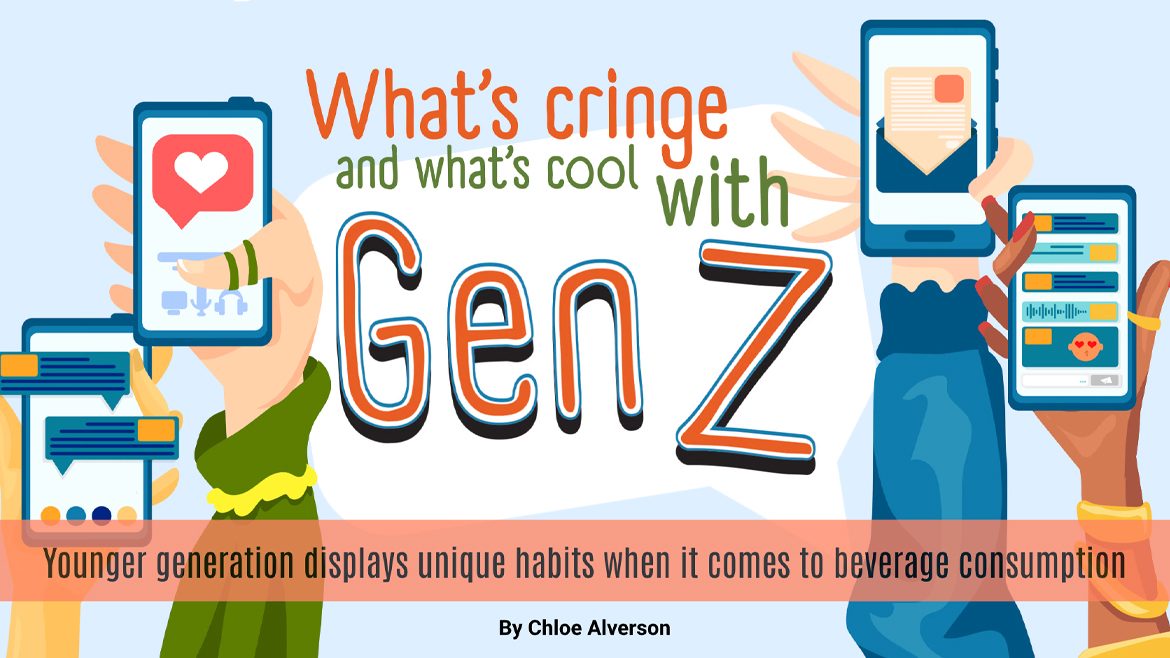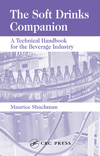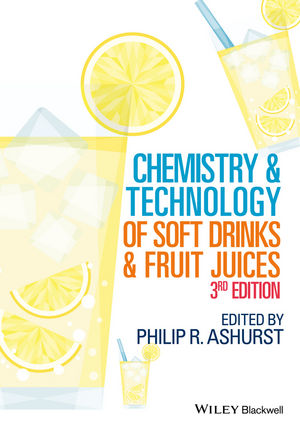Coding technology presents a tough code to crack
Whether it’s a quality assurance code or promotional marking, beverage companies require coding technology that keeps up with the entire packaging line. In some parts of the industry, that means the ability to laser code as many as 70,000 bottles an hour, while other applications may require more complex patterns on aluminum cans or secondary packaging.
The demands on laser and ink jet coding equipment are similar to overall industry trends, says Paul Schildhouse, product manager of lasers, for Videojet, Wood Dale, Ill.
“What we generally hear from beverage producers as far as coding requirements go, they’re looking for reliability of equipment and maximizing their uptime in their production,” Schildhouse says. “More so in the last year or so, has been flexibility so they’re doing more product changeovers and shorter runs. We think that’s reflective of the economic downturn. And ultimately, they’re looking for low cost of ownership.”
In addition, coding equipment has been challenged by lightweighting of plastic bottles. The thinner walls on lightweighted bottles create a higher risk of puncturing during the coding process, manufacturers say. In response, laser coding manufacturers fine tuned or changed the wavelength of the light to engrave less deeply into the surface of the plastic, Schildhouse says. Domino, Gurnee, Ill., also has seen success with running lasers at various wavelengths that are better absorbed by PET material. The result are more shallow and higher contrast lines that lessen the risk of burning through the thinner wall of the bottle, says Bill Bonaccorsi, director of marketing and product manager for Domino.
In some cases, customers who had switched to laser coding have opted to return to ink jet coders due to the reduced density of the bottles and the need for a different type of code, says Kelly Becker, Videojet’s product manager of continuous ink jet.
Getting inked
Ink jet coders mainly are used for printing on aluminum cans and some PET bottles depending on color, Becker says. Ink jet coding also offers the advantage of an array of ink choices to fit a company’s branding, she says. In the past two years, Videojet introduced a new product line of ink jet printers that keep up with the industry’s production demands, she says.
“Most of our beverage customers are high duty, high cycle users, so they’re running 24 hours a day, seven days a week,” Becker says. “We developed a clean flow print head, which increases the uptime that a customer has the printer running without the need for intervention, so it gives them clean codes on products over time.”
Videojet also redesigned the ink system on its ink jets, replacing bottles of ink with a cartridge system similar to a desktop printer. In addition to being cleaner, the cartridges have assigned codes that make changing the cartridges simpler, Becker says.
Solving industry demand for more complex codes, Domino developed continuous ink jet (CIJ) technology with two nozzles to print twice as much information. Domino’s CIJ coders can print up to eight lines of print or two lines of print at double the speed of traditional CIJ printers, Bonaccorsi says.
The company also offers its G-Series thermal ink jet (TIJ) printers, which are available with solvent-based inks. The G-Series combines the reliability and simplicity inherent in TIJ printers with the benefits of solvent-based inks, which is unique in the industry, Bonaccorsi says. The G-Series is suited for high-speed, high-resolution coding on cartons, labels, sachets and pouches, Domino says.
ID Technology also offers new ink technology, says Guy Bradford, ink jet product manager for the Fort Worth, Texas-based company. Recently, Bradford has seen a move toward acetone inks and away from MEK inks. Acetone has no volatile organic compounds and lacks the odor often associated with MEK inks.
“The great thing about acetone is that it has a lot of the same characteristics of MEK,” Bradford says. “It looks exactly the same, you wouldn’t know if you saw the marks side by side. It has the same dry time. It even has better adhesion in some instances than MEK.”
In addition, the company’s Citronix line of CIJ printers use soft pigments, which require less intervention than traditional hard pigments, he says. The soft pigments are available in a range of colors, and, during periods of downtime the pigments do not dry in the nozzles or gutters, or clog lines, Bradford says.
ID Technology also offers a line of high-resolution SoloSeries printers through a long-standing partnership with FoxJet, St. Charles, Mo. The printers have one or two cartridges each a half-inch high, which can be used together for a 1-inch tall print or for up to 10 lines of print, Bradford says. The SoloSeries is suited for applications requiring high-resolution prints on product trays for club stores, he says.
Markem-Imaje, Kennesaw, Ga., released a high-resolution ink jet printer for direct case coding last year. The 5600 High Resolution Liquid Ink Jet Printer uses glycol-ether quick-dry ink for high-quality graphics, text and barcodes on corrugate cases and trays. The printer features an ink management system, which consists of a large capacity, self-contained cartridge that was designed to recover purged ink and to be easily replaced during production, the company says.
Need for speed
On high-speed packaging lines, the speed of a coder can impact the overall line, says John Gonzales, national business development manager for the laser division of ID Technology.
“The restriction that a lot of the bottling factories have right now is that they actually have the capability of producing upwards of 1,200, 1,500 and 2,000 bottles a minute, but the restriction is the coding,” he says.
ID Technology’s laser division is focused on creating equipment that can handle the high filling speeds used by its customers, Gonzales says. The company offers 60- and 70-watt machines that use Macsa high-speed lasers programmed with algorithms to code at speeds as fast as the packaging line, Gonzales says. The high-speed coders also are capable of writing two lines of code, which is an advantage, he says.
“The production line in bottling plants typically has one line of code and the reason is because they’re restricted by the laser’s capability to do two lines of code at a high speed,” Gonzales says. “You’ll see laser codes on water bottles and you’ll read two lines of code, but the production speed is not able to do that. They had to slow the production speed down in order to enable the lasers to be used.”
Videojet’s laser coding equipment also was designed to meet the speed requirements of the beverage industry, Schildhouse says. The products that Videojet has introduced over the past four years also are capable of marking a wide physical or dimensional field, he says. The advancements make it so changing the location of a code does not require an operator to move the laser between product runs, Schildhouse says.
“Some beverage customers have thus simplified their product changeovers because to mark one product we might be marking, let’s say, below the center line and when they switch from a 1-liter to a 2-liter bottle the code needs to be in a different location,” he says. “The laser has a wide enough range of operation in terms of its marking field that it can also mark above the center line.”
Simplifying the process
Beverage-makers also are searching for equipment that requires less time from an operator, Videojet’s Becker says.
“As beverage companies’ business has tightened, they’re asking their internal staff to do more with less,” Becker says. “So they are asking staff members to be able to run all components of the production line, not just one specific entity anymore. So ease of maintenance and the ability for a product to be simple is really top of mind for them.”
For easy set-up, ID Technology developed an interface that uses a questionnaire to set-up the machine, Gonzales says. The interface runs through questions on the pitch of the bottles and other equipment on the line, the responses to which build the code, he says. The interface is available on ID Technology’s iCon Co2 10-watt laser coder for the bottling industry.
The company’s ink jet business offers remote connectivity via an ethernet port on its Citronix CIJ line of coders. Known as ciLink, the technology connects to the printer’s IP address through a web browser and allows an administrator to control a single system or a group of systems, Bradford says. The user can view and control what’s on the printer’s screen, check configurations and manage messages without having to be on the production floor.
For companies that have limited resources, Domino can take complete ownership of a company’s coding solutions, Bonaccorsi says. Domino also has created a new solution through the combination of its coders with a vision-based system, which prints and verifies the code. For the solution, Domino has aligned itself with key companies in the vision industry, he says.
“This is definitely a new trend and customer requirement,” Bonaccorsi says. “There are a couple of drivers for this. One is insuring that products without codes do not get into the supply chain. But even better, doing it right in line in production so if the coding printer is not applying the code, you can detect it immediately and reduce costs associated with missing prints on products. ... Secondly with the attention on traceability, making sure that the code is right, meaning we’re printing the right information and the information is readable to the consumer.”
Domino has created a solution that prints the code and then takes a picture of it, which is stored in a database.
“It’s a version of track and trace, so that the manufacturers can insure that the product produced is for specific channels and is staying within its geographic domain,” Bonaccorsi says. “By putting a code on there and assigning that code to a specific distributor, a specific region or geographic area, if the product is diverted into another area, they can identify the product and the source and take corrective action.”
On the horizon
Beverage customers also have become more concerned with the long-term sustainability of coding equipment. Videojet says customers have asked for self-evaluations of the carbon footprint of its coding equipment. The company also has engineered its laser coders to be fan-cooled instead of cooled by compressed air, he says.
“Customers are switching from compressed air cooled lasers to the Videojet fan-cooled lasers and realizing sometimes $1,000 a year in energy savings per laser,” Schildhouse says.
For ink jet printers, beverage-makers are looking for inks and coders that use as little chemicals as possible while still getting great codes, Videojet’s Becker says. Domino also reports a demand for new inks, fewer disposable components and longer life of components, Bonaccorsi says.
In addition to keeping up with green demands, coding technology manufacturers also are paving the way for new applications. ID Technology is testing the use of laser coding for under the cap promotional codes, Gonzales says. The company is using its high-speed 50-watt pulse fiber laser coupled with an additive in the cap that reacts to produce the look of black or gold ink. The test is on the interior of the cap, but could be used on the outside of the cap as well, Gonzales says. BI
The demands on laser and ink jet coding equipment are similar to overall industry trends, says Paul Schildhouse, product manager of lasers, for Videojet, Wood Dale, Ill.
“What we generally hear from beverage producers as far as coding requirements go, they’re looking for reliability of equipment and maximizing their uptime in their production,” Schildhouse says. “More so in the last year or so, has been flexibility so they’re doing more product changeovers and shorter runs. We think that’s reflective of the economic downturn. And ultimately, they’re looking for low cost of ownership.”
In addition, coding equipment has been challenged by lightweighting of plastic bottles. The thinner walls on lightweighted bottles create a higher risk of puncturing during the coding process, manufacturers say. In response, laser coding manufacturers fine tuned or changed the wavelength of the light to engrave less deeply into the surface of the plastic, Schildhouse says. Domino, Gurnee, Ill., also has seen success with running lasers at various wavelengths that are better absorbed by PET material. The result are more shallow and higher contrast lines that lessen the risk of burning through the thinner wall of the bottle, says Bill Bonaccorsi, director of marketing and product manager for Domino.
In some cases, customers who had switched to laser coding have opted to return to ink jet coders due to the reduced density of the bottles and the need for a different type of code, says Kelly Becker, Videojet’s product manager of continuous ink jet.
Getting inked
Ink jet coders mainly are used for printing on aluminum cans and some PET bottles depending on color, Becker says. Ink jet coding also offers the advantage of an array of ink choices to fit a company’s branding, she says. In the past two years, Videojet introduced a new product line of ink jet printers that keep up with the industry’s production demands, she says.
“Most of our beverage customers are high duty, high cycle users, so they’re running 24 hours a day, seven days a week,” Becker says. “We developed a clean flow print head, which increases the uptime that a customer has the printer running without the need for intervention, so it gives them clean codes on products over time.”
Videojet also redesigned the ink system on its ink jets, replacing bottles of ink with a cartridge system similar to a desktop printer. In addition to being cleaner, the cartridges have assigned codes that make changing the cartridges simpler, Becker says.
Solving industry demand for more complex codes, Domino developed continuous ink jet (CIJ) technology with two nozzles to print twice as much information. Domino’s CIJ coders can print up to eight lines of print or two lines of print at double the speed of traditional CIJ printers, Bonaccorsi says.
The company also offers its G-Series thermal ink jet (TIJ) printers, which are available with solvent-based inks. The G-Series combines the reliability and simplicity inherent in TIJ printers with the benefits of solvent-based inks, which is unique in the industry, Bonaccorsi says. The G-Series is suited for high-speed, high-resolution coding on cartons, labels, sachets and pouches, Domino says.
ID Technology also offers new ink technology, says Guy Bradford, ink jet product manager for the Fort Worth, Texas-based company. Recently, Bradford has seen a move toward acetone inks and away from MEK inks. Acetone has no volatile organic compounds and lacks the odor often associated with MEK inks.
“The great thing about acetone is that it has a lot of the same characteristics of MEK,” Bradford says. “It looks exactly the same, you wouldn’t know if you saw the marks side by side. It has the same dry time. It even has better adhesion in some instances than MEK.”
In addition, the company’s Citronix line of CIJ printers use soft pigments, which require less intervention than traditional hard pigments, he says. The soft pigments are available in a range of colors, and, during periods of downtime the pigments do not dry in the nozzles or gutters, or clog lines, Bradford says.
ID Technology also offers a line of high-resolution SoloSeries printers through a long-standing partnership with FoxJet, St. Charles, Mo. The printers have one or two cartridges each a half-inch high, which can be used together for a 1-inch tall print or for up to 10 lines of print, Bradford says. The SoloSeries is suited for applications requiring high-resolution prints on product trays for club stores, he says.
Markem-Imaje, Kennesaw, Ga., released a high-resolution ink jet printer for direct case coding last year. The 5600 High Resolution Liquid Ink Jet Printer uses glycol-ether quick-dry ink for high-quality graphics, text and barcodes on corrugate cases and trays. The printer features an ink management system, which consists of a large capacity, self-contained cartridge that was designed to recover purged ink and to be easily replaced during production, the company says.
Need for speed
On high-speed packaging lines, the speed of a coder can impact the overall line, says John Gonzales, national business development manager for the laser division of ID Technology.
“The restriction that a lot of the bottling factories have right now is that they actually have the capability of producing upwards of 1,200, 1,500 and 2,000 bottles a minute, but the restriction is the coding,” he says.
ID Technology’s laser division is focused on creating equipment that can handle the high filling speeds used by its customers, Gonzales says. The company offers 60- and 70-watt machines that use Macsa high-speed lasers programmed with algorithms to code at speeds as fast as the packaging line, Gonzales says. The high-speed coders also are capable of writing two lines of code, which is an advantage, he says.
“The production line in bottling plants typically has one line of code and the reason is because they’re restricted by the laser’s capability to do two lines of code at a high speed,” Gonzales says. “You’ll see laser codes on water bottles and you’ll read two lines of code, but the production speed is not able to do that. They had to slow the production speed down in order to enable the lasers to be used.”
Videojet’s laser coding equipment also was designed to meet the speed requirements of the beverage industry, Schildhouse says. The products that Videojet has introduced over the past four years also are capable of marking a wide physical or dimensional field, he says. The advancements make it so changing the location of a code does not require an operator to move the laser between product runs, Schildhouse says.
“Some beverage customers have thus simplified their product changeovers because to mark one product we might be marking, let’s say, below the center line and when they switch from a 1-liter to a 2-liter bottle the code needs to be in a different location,” he says. “The laser has a wide enough range of operation in terms of its marking field that it can also mark above the center line.”
Simplifying the process
Beverage-makers also are searching for equipment that requires less time from an operator, Videojet’s Becker says.
“As beverage companies’ business has tightened, they’re asking their internal staff to do more with less,” Becker says. “So they are asking staff members to be able to run all components of the production line, not just one specific entity anymore. So ease of maintenance and the ability for a product to be simple is really top of mind for them.”
For easy set-up, ID Technology developed an interface that uses a questionnaire to set-up the machine, Gonzales says. The interface runs through questions on the pitch of the bottles and other equipment on the line, the responses to which build the code, he says. The interface is available on ID Technology’s iCon Co2 10-watt laser coder for the bottling industry.
The company’s ink jet business offers remote connectivity via an ethernet port on its Citronix CIJ line of coders. Known as ciLink, the technology connects to the printer’s IP address through a web browser and allows an administrator to control a single system or a group of systems, Bradford says. The user can view and control what’s on the printer’s screen, check configurations and manage messages without having to be on the production floor.
For companies that have limited resources, Domino can take complete ownership of a company’s coding solutions, Bonaccorsi says. Domino also has created a new solution through the combination of its coders with a vision-based system, which prints and verifies the code. For the solution, Domino has aligned itself with key companies in the vision industry, he says.
“This is definitely a new trend and customer requirement,” Bonaccorsi says. “There are a couple of drivers for this. One is insuring that products without codes do not get into the supply chain. But even better, doing it right in line in production so if the coding printer is not applying the code, you can detect it immediately and reduce costs associated with missing prints on products. ... Secondly with the attention on traceability, making sure that the code is right, meaning we’re printing the right information and the information is readable to the consumer.”
Domino has created a solution that prints the code and then takes a picture of it, which is stored in a database.
“It’s a version of track and trace, so that the manufacturers can insure that the product produced is for specific channels and is staying within its geographic domain,” Bonaccorsi says. “By putting a code on there and assigning that code to a specific distributor, a specific region or geographic area, if the product is diverted into another area, they can identify the product and the source and take corrective action.”
On the horizon
Beverage customers also have become more concerned with the long-term sustainability of coding equipment. Videojet says customers have asked for self-evaluations of the carbon footprint of its coding equipment. The company also has engineered its laser coders to be fan-cooled instead of cooled by compressed air, he says.
“Customers are switching from compressed air cooled lasers to the Videojet fan-cooled lasers and realizing sometimes $1,000 a year in energy savings per laser,” Schildhouse says.
For ink jet printers, beverage-makers are looking for inks and coders that use as little chemicals as possible while still getting great codes, Videojet’s Becker says. Domino also reports a demand for new inks, fewer disposable components and longer life of components, Bonaccorsi says.
In addition to keeping up with green demands, coding technology manufacturers also are paving the way for new applications. ID Technology is testing the use of laser coding for under the cap promotional codes, Gonzales says. The company is using its high-speed 50-watt pulse fiber laser coupled with an additive in the cap that reacts to produce the look of black or gold ink. The test is on the interior of the cap, but could be used on the outside of the cap as well, Gonzales says. BI
Looking for a reprint of this article?
From high-res PDFs to custom plaques, order your copy today!





